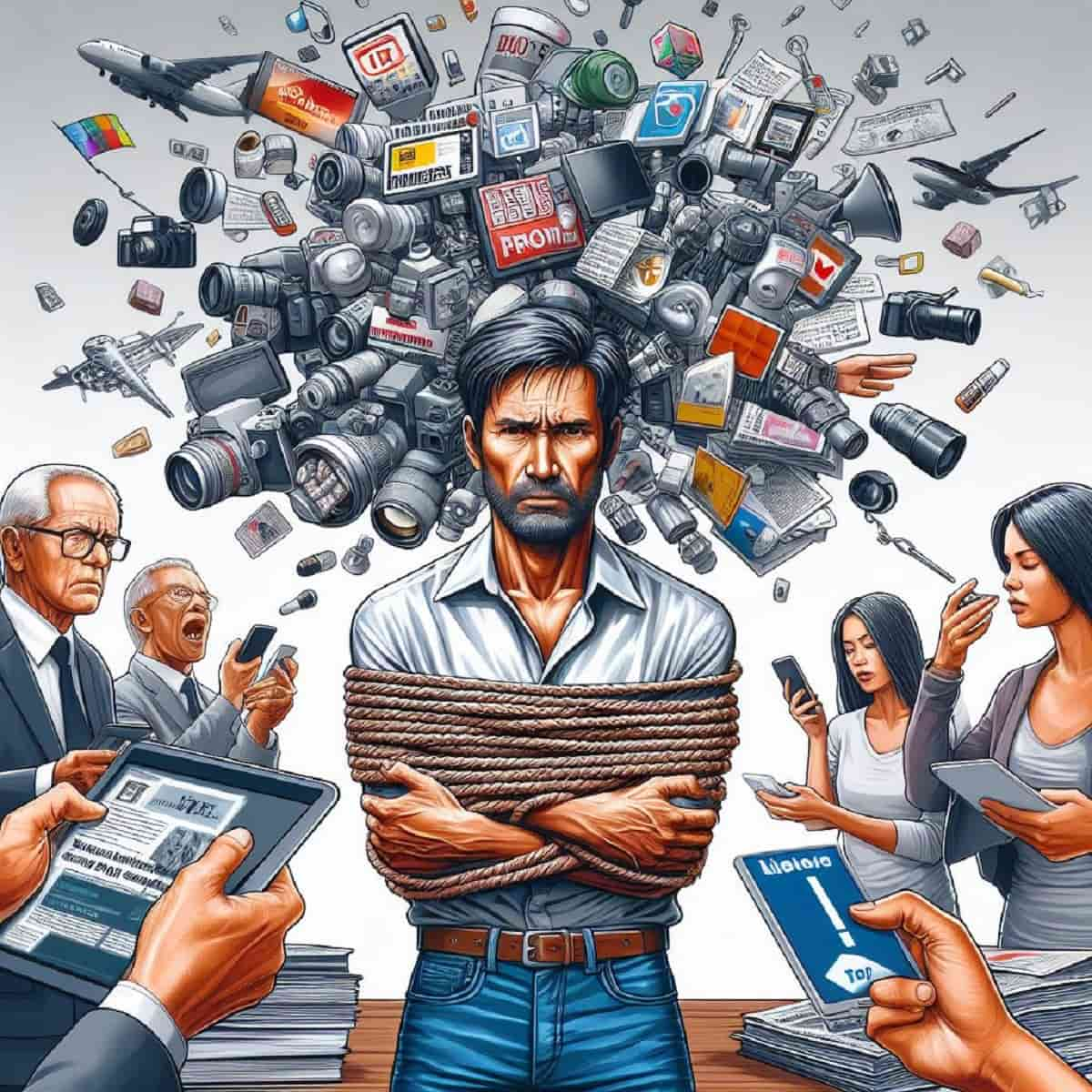
Social media has become a powerful force in our lives, shaping how we connect, consume information, and even make decisions. However, with great power comes great responsibility—and controversy. From the Cambridge Analytica scandal to the addictive nature of social media, there’s a lot more going on behind the screens than meets the eye. This article delves into the dark side of social media, exploring key controversies, psychological impacts, and the business models driving these platforms.
Cambridge Analytica and Facebook’s Controversy
What Happened?
In 2018, the Cambridge Analytica scandal rocked Facebook’s world. It was revealed that the data analytics firm harvested personal data from millions of Facebook users without their consent. This data was used to create targeted political ads during major elections, including the 2016 U.S. presidential election and the Brexit referendum. The scandal highlighted significant issues with data privacy and misuse.
The Fallout
The controversy had far-reaching consequences:
- Privacy Reforms: It led to calls for stricter data protection laws and greater transparency from tech companies.
- Reputation Damage: Facebook faced intense scrutiny and criticism, impacting its public image and trustworthiness.
- Regulatory Actions: Governments around the world began investigating and imposing regulations on data privacy and social media practices.
The Cambridge Analytica scandal serves as a stark reminder of the potential for abuse in the digital age and the need for robust data protection measures.
How Facebook Manipulated Elections
Targeted Advertising
Facebook’s ability to deliver highly targeted ads became a double-edged sword. While it offers businesses a way to reach their ideal audience, it also allowed for the manipulation of political opinions. The platform’s algorithms enabled political campaigns to target voters with tailored messages, sometimes based on misleading or divisive content.
The Influence
The impact of these targeted ads was profound:
- Shaping Opinions: Tailored ads influenced voter perceptions and behaviors.
- Spreading Misinformation: Fake news and propaganda were disseminated more easily.
- Erosion of Trust: The manipulation of electoral processes undermined trust in democratic systems.
These issues underscore the need for greater accountability and ethical considerations in digital advertising.
The Social Dilemma Documentary: Key Takeaways
Overview of the Film
“The Social Dilemma,” a documentary released in 2020, explores the hidden dangers of social media. It features interviews with former tech insiders who reveal how social media platforms manipulate users for profit. The film highlights issues like addiction, privacy breaches, and the spread of misinformation.
Key Takeaways
- Algorithmic Control: Social media algorithms are designed to maximize user engagement, often at the expense of mental health and truth.
- Addiction: Platforms are engineered to be addictive, exploiting psychological triggers to keep users hooked.
- Misinformation: The spread of false information is amplified by algorithms that prioritize sensational content.
The documentary provides a sobering look at the impact of social media on our lives and emphasizes the need for reform.
The Psychological Impact of Social Media
Mental Health Effects
Social media can have significant psychological effects, both positive and negative. On one hand, it helps people stay connected and informed. On the other hand, it can lead to various mental health issues:
- Anxiety and Depression: Constant exposure to idealized images and lifestyles can lead to feelings of inadequacy and low self-esteem.
- Addiction: The need to check notifications and updates can become compulsive, impacting daily life and productivity.
- FOMO (Fear of Missing Out): Social media can exacerbate feelings of missing out on social events and experiences.
Understanding these effects can help users manage their social media habits more healthily.
How Algorithms Control Social Media Users
The Power of Algorithms
Social media platforms use algorithms to curate what you see in your feed. These algorithms analyze your behavior, such as likes, shares, and comments, to predict what content you will find engaging. While this personalization can enhance user experience, it also has drawbacks:
- Echo Chambers: Algorithms can create echo chambers by showing you content that reinforces your existing beliefs, limiting exposure to diverse perspectives.
- Manipulation: By prioritizing sensational or controversial content, algorithms can manipulate user emotions and behavior.
The influence of algorithms underscores the importance of being aware of how your online experience is shaped.
The Addictive Nature of Short Video Content
Why It’s So Engaging
Short video content, like that found on TikTok and Instagram Reels, is designed to be highly engaging. Here’s why it’s so addictive:
- Instant Gratification: Short videos provide immediate entertainment and satisfaction.
- Algorithmic Feeds: Platforms use algorithms to keep you hooked by constantly delivering content tailored to your interests.
- Social Validation: Likes, comments, and shares provide instant feedback and validation, encouraging more use.
These factors contribute to the addictive nature of short video content and highlight the need for mindful consumption.
Dopamine Hits from Social Media Explained
The Science Behind It
Social media activates the brain’s reward system by releasing dopamine, a neurotransmitter associated with pleasure and motivation. Each notification, like, or share triggers a dopamine release, reinforcing the behavior. This cycle of reward and reinforcement can lead to addictive patterns of behavior.
Managing Dopamine Hits
To manage your dopamine levels and reduce social media addiction:
- Set Boundaries: Limit your social media usage to specific times of day.
- Engage in Offline Activities: Balance your screen time with physical activities and face-to-face interactions.
- Practice Mindfulness: Be aware of your social media habits and their impact on your well-being.
Understanding the role of dopamine can help you develop healthier social media habits.
How Instagram Keeps Users Hooked
Features That Drive Engagement
Instagram employs several strategies to keep users engaged:
- Stories and Reels: These features provide fresh, ephemeral content that encourages frequent checking.
- Algorithmic Feed: Personalized content keeps users scrolling by showing posts aligned with their interests.
- Social Proof: Notifications of likes, comments, and new followers provide instant feedback and validation.
These strategies make Instagram highly engaging but can also contribute to excessive use and addiction.
Social Media Addiction: Causes and Effects
Causes of Addiction
Several factors contribute to social media addiction:
- Instant Gratification: The immediate rewards from likes and comments can be highly reinforcing.
- Social Comparison: Constant exposure to curated images and lifestyles can drive compulsive checking.
- Fear of Missing Out (FOMO): The desire to stay updated on social events and trends can lead to excessive use.
Effects of Addiction
The effects of social media addiction can be profound:
- Mental Health Issues: Increased risk of anxiety, depression, and low self-esteem.
- Impaired Productivity: Excessive use can interfere with work, study, and personal responsibilities.
- Social Relationships: Overuse can impact relationships by reducing face-to-face interactions.
Addressing social media addiction involves recognizing its signs and implementing strategies to reduce usage.
The Business Model of Social Media Platforms
How Platforms Make Money
Social media platforms generate revenue primarily through:
- Advertising: Targeted ads are the main source of income, allowing businesses to reach specific audiences.
- Data Monetization: User data is used to refine advertising strategies and generate additional revenue.
- Subscription Models: Some platforms offer premium features or ad-free experiences for a fee.
Understanding the business model behind social media can help users make informed decisions about their online engagement.
YouTube’s Transformation Over the Years
From Video Sharing to Entertainment Hub
Launched in 2005, YouTube started as a platform for sharing user-generated videos. Over the years, it has transformed into a major entertainment hub with a diverse range of content:
- Monetization: YouTube introduced ad revenue sharing, allowing creators to earn money from their videos.
- Original Content: The platform launched YouTube Originals and premium content to compete with traditional media.
- Live Streaming: Added live streaming features to attract real-time content creators and viewers.
This evolution reflects YouTube’s efforts to adapt and expand its role in the digital entertainment landscape.
How YouTube is Replacing Traditional TV
Shifting Viewership
YouTube has become a popular alternative to traditional TV for several reasons:
- On-Demand Content: Viewers can watch videos anytime, anywhere, without being tied to a broadcast schedule.
- Diverse Programming: YouTube offers a wide range of content, from educational videos to entertainment, catering to various interests.
- Interactive Features: Unlike traditional TV, YouTube allows for viewer interaction through comments, likes, and shares.
These features have contributed to YouTube’s growing influence as a replacement for traditional TV.
The Impact of YouTube on Streaming Platforms
Changing the Streaming Landscape
YouTube’s rise has had a significant impact on other streaming platforms:
- Content Competition: The availability of free content on YouTube has pressured paid streaming services to offer unique programming.
- Monetization Models: YouTube’s ad-supported model has influenced how other platforms approach content monetization.
- User Behavior: YouTube’s on-demand, user-generated content has shifted viewer expectations and preferences.
The platform’s impact highlights the evolving dynamics of digital media and content consumption.
YouTube Shorts vs. TikTok: A Comparison
Features and Differences
- YouTube Shorts: Launched in 2020, Shorts offers a similar short-form video experience as TikTok. It integrates with YouTube’s existing platform, allowing users to create and discover short videos.
- TikTok: Known for its viral, user-generated content, TikTok has pioneered the short-form video trend with advanced editing tools and a highly engaging algorithm.
Comparison Points
- User Base: TikTok has a larger, more active user base for short videos, while Shorts benefits from YouTube’s existing audience.
- Content Creation: TikTok offers more creative tools and effects, whereas Shorts leverages YouTube’s extensive library and community.
- Monetization: TikTok is experimenting with various monetization strategies, while Shorts aims to integrate with YouTube’s established ad revenue model.
Why YouTube Shorts Isn’t Profitable
Challenges Facing Shorts
Despite its popularity, YouTube Shorts faces profitability challenges:
- Monetization: Unlike traditional YouTube content, Shorts has yet to establish a robust monetization model for creators.
- Competition: TikTok’s dominance in short-form video content presents stiff competition for Shorts.
- Content Creation: Producing high-quality short videos requires significant effort, which may not translate into immediate financial returns.
Addressing these challenges will be crucial for YouTube Shorts to become a profitable and sustainable feature.
In conclusion, social media’s dark side involves complex issues of privacy, addiction, and business practices. Understanding these aspects can help you navigate the digital world more effectively and make informed decisions about your online presence.










